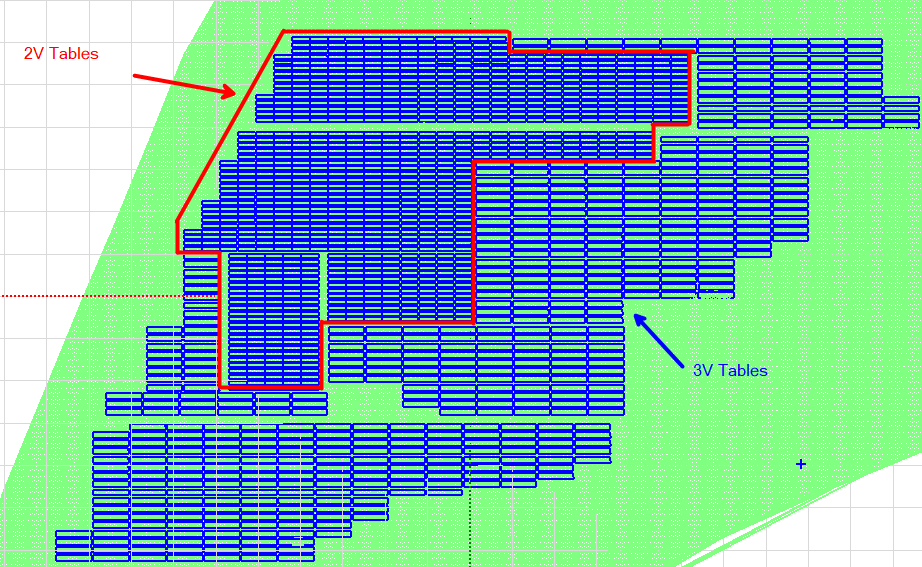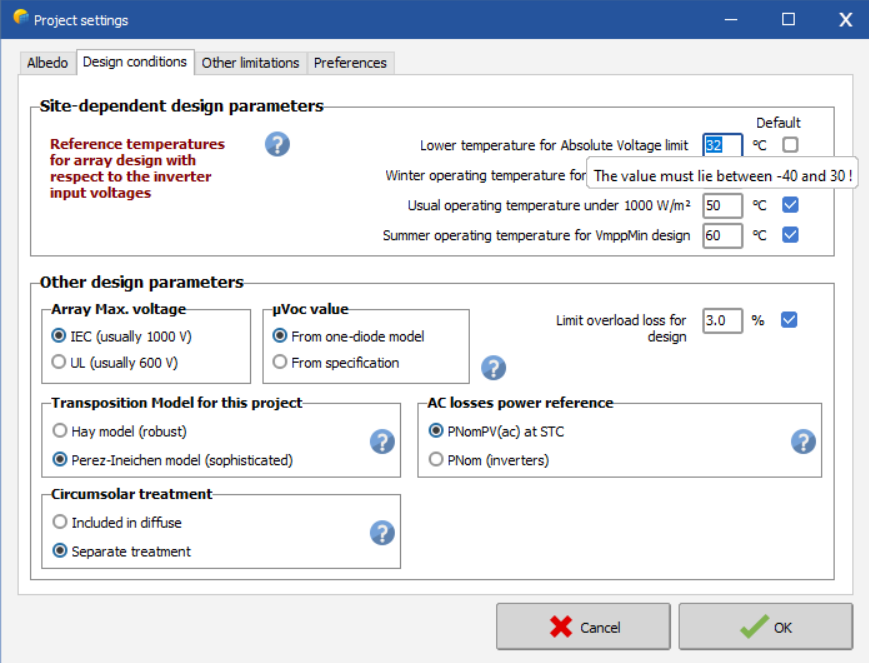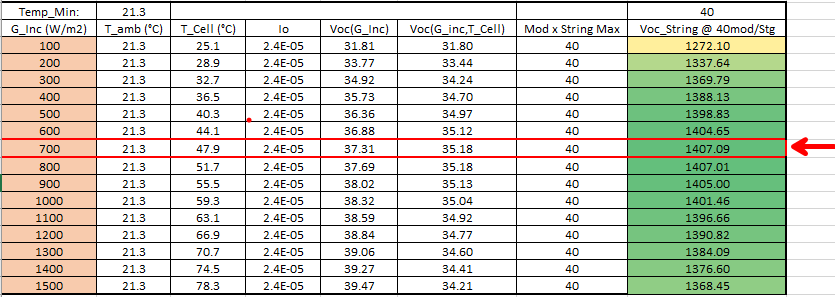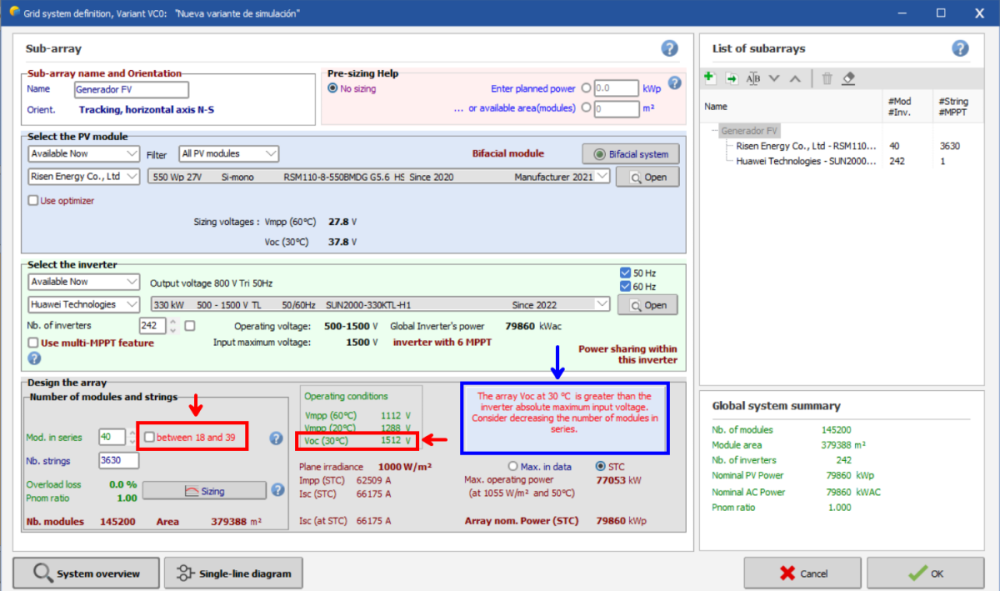
Edwin Tellez
Members-
Posts
10 -
Joined
-
Last visited
Recent Profile Visitors
The recent visitors block is disabled and is not being shown to other users.
-
LID + useful life of a photovoltaic module
Edwin Tellez replied to Edwin Tellez's topic in PV Components
Hi dtarin, What percentages of losses due to LID have been evident in type N modules? -
Hi, I have three concerns regarding the LID factor and how it influences the performance of the photovoltaic modules: 1. How long does the LID effect last in the useful life of a photovoltaic module? 2. Should the LID parameter be maintained during all the years of operation of the photovoltaic module? 3. For a type N photovoltaic module, what LID value is advisable to use in the simulation? Thanks for your time.
-
Thank you very much for your valuable response and contribution. Best regards, Edwin T.
-
Thank you so much Anges for your valuable answer. I understand what you are telling me when obtaining specific generations with Pxx in "Energy management", but what I really need is to load TMY files with P-40 and P-10 into PVSyst, to carry out the simulations and be able to obtain the respective PR for each scenario with TMY P- 10 and TMY P-40 respectively. Is this possible? Could I generate these files (TMY-P10 & TMY-P90) with PVSyst? Thanks a lot for your collaboration.🙏
-
Good day, I am currently in the process of defining the test protocols for the start-up of a solar park in Colombia, exactly in the region of El Copey, department of Cesar, where simulations need to be carried out in PVSyst under a TMY meteorological-based scenario with P -10 and for years 1 and 2 with TMY P-40. Is it possible to create these databases with PVSyst from a 23 year hourly multi-year database? Thank you so much.
-
Edwin Tellez started following Pitch between table is not sufficiently homogeneous
-
I have a project with fixed structures of different configurations 3Vx28, 3Vx14, 2Vx14 with bifacial photovoltaic modules. There is a .pvc and .csv file for shadow analysis, but when activating the bifaciality function of the modules, PVSyst does not allow the simulation to be carried out: A pitch is considered between 2V tables of 6 m and between 3V tables of 9m. The types of tables considered for the project are a product of the typology of the terrain, seeking to optimize earthworks. Will it be possible to make some type of adjustment to the PVSyst parameters that allows the simulation to be carried out, activating the bifaciality function of the modules with these types of fixed tables (2V and 3V)? thank you so much for your support and attention.
-
Hi Everybody I have a trouble... A customer that says that through its own simulation software (does not provide information) it can configure strings of 40 modules RISEN brand modules RSM110-8-550BMDG, but in PVSyst it does not allow this, but rather a maximum of 38 modules in series with a minimum temperature of 20°C. The client also says that they consider a minimum temperature during peak production hours of 20°C. Is it possible to configure strings of 40 modules in PVSyst through RISEN brand modules model RSM110-8-550BMDG? The installation location is at the following coordinates: #Latitude: 10.615 / #Longitude: -74.81 I greatly appreciate your support.
-
The client says that through its own software it can configure strings of 40 modules RISEN brand modules RSM110-8-550BMDG, but in PVSyst it does not allow this, but rather a maximum of 38 modules in series with a minimum temperature of 20°C. The client also says that they consider a minimum temperature during peak production hours of 20°C. Is it possible to configure strings of 40 modules in PVSyst through RISEN brand modules model RSM110-8-550BMDG? The installation location is at the following coordinates: #Latitude: 10.615 / #Longitude: -74.81 I greatly appreciate your support.
-
Hi everyone! Currently, I am trying to carry out a simulation for a photovoltaic project where the customer requires strings of 40 photovoltaic modules of the RISEN brand, model RSM110-8-550BMDG, which has a Voc of 38.32V. When the total number of photovoltaic modules in series is multiplied by the Voc, it gives a value greater than 1500V (more exactly 1532.80V). This result has been reported to the customer, who assures that he has carried out an analysis with his own software (he does not indicate which software he refers to), where at an average temperature of 25°C he obtains a total String voltage of less than 1500V. The place where the photovoltaic project is intended to be carried out has a minimum temperature of 23°C according to the meteorological database (TMY). The client also reports that the analyzes are carried out according to the recommendations indicated by the IEC 60891, IEC 62738, IEC 62548 standards, as well as the formulas shown below: (1) (2) (3) For a range of irradiances between 100W/m2 and 1500W/m2, the following results are obtained: It can be observed that at an irradiance of 700 W/m2, the maximum voltage obtained at 21.3°C is 1407.09V, which is below the maximum DC voltage at the inverter input (1500V). But with PVSyst it is not possible to configure a string of 40 modules since it is not allowed as the Voc allowed by the inverter is exceeded: I have tried to adjust the minimum temperature for the absolute voltage limit, but it does not allow adjusting to a temperature higher than 30°C in such a way that it allows reducing the Voc below 1500V, and thus achieving the continuation of the photovoltaic system simulation: Is it possible to adjust the minimum temperature range for the absolute voltage limit? What other option or parameter can I adjust to be able to perform the simulation? Thank you very much for your attention and support.










